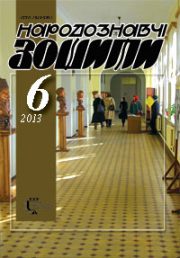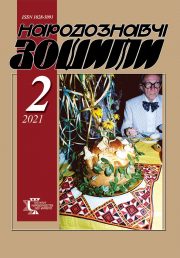The Ethnology Notebooks. 2017, 6 (138), 1511—1520
UDK 75/76.071.1(477.83) “19” I. Kurakh
DOI https://doi.org/10.15407/nz2017.06.1511
Received 31.10.2017
FROM «SPOKIY» TO THE VENICE BIENNALE: CREATIVE FATE OF IVAN KURAKH
ORCID ID: https://orcid.org/0000-0003-1509-5367
Yatsiv Roman Myronovych, Vice-rector on the scientific work
of the Lviv National Academy of Arts, Ph.D.,
associate professor, Honored Worker of Culture of Ukraine.
Kubiiovycha Str., 38, Lviv, 79011, Ukraine.
Contacts: Tel. (032) 2761482; e-mail: jaciv@ukr.net
Abstract. The article deals with the stages of formation and creative development of the outstanding painter and graphic artist Ivan Kurach (1909—1968), born in the village Serdytsia, the Lviv region. In connection with the lack of accurate documentary information on individual episodes of the artist’s life, various sources of information are being compared, and an attempt to reconstruct the genrethematic structure of his creative heritage is made. The artist’s professional progress is compared with the context of the history of Italian fine art in the middle of the 20‑th century. The key works of painting and graphic art by I. Kurakh are being analyzed, the thematicsemantic field of his main cycles is being interpreted. Special attention is paid to moral, ethical and civic aspects of his creative biography.
Keywords: Ivan Kurakh, World War II, Ukrainian art emigration, fine arts, painting, graphics, metaphysical art, lyrical abstraction, neoclassical landscape, civil position, moral and ethical imperative.
REFERENCES
Bradovych, M. (1950, August 24). Dosiahnennia ukrains’koho maliara v Italii. Svoboda, 196. [in Ukrainian]
Vystavka obraziv Ivana Kurakha u stolytsi Pakistanu. (1967, March 24). Svoboda, 53. [in Ukrainian]
Vystavka ukrains’koho maliara v Niujorks’komu Koliseiu. (1956, May 17). Svoboda, 93. [in Ukrainian]
Kedryn, I. (1968, March 8). Ivan Kurakh. Svoboda, 46. [in Ukrainian]
Kedryn, I. (1962, June 29). Mykhajlo Kurakh. Svoboda, 123. [in Ukrainian]
Kosarenko-Kosarevych V. (1957). Maliar, obrazy, dity j ukrainstvo. Svoboda. [in Ukrainian]
Kurakh, I. (1953, December 31). Oleksander Arkhypenko (dopovid’, vyholoshena v LMKliubi v N’iu-Jorku z nahody 50-richchia tvorchosty mysttsia). Svoboda, 268. [in Ukrainian]
Kurakh, I. (1953, December 26). Ukrains’kij dytyni. Svoboda, 248. [in Ukrainian]
Kurakh, M. (1963). Pered bramoiu: Poezii. Miunkhen : Na Chuzhyni. [in Ukrainian]
Pachovs’kyj, R. (1955, May 11). Vystava Ivana Kurakha. Svoboda, 89. [in Ukrainian]
Pevnyj, B. (2005). Pershi p’iatnadtsiat’ rokiv. In B. Pevnyj, Majstry nashoho mystetstva: Rozdumy pro mysttsiv ta mystetstvo (pp. 341—362). N’iu-Jork : Ukrains’ka vil’na akademiia nauk u SShA ; Kyiv : Suchasnist’. [in Ukrainian]
Pelens’ka, O. (2005). Ukrains’kyj portret na tli Prahy: Ukrains’ke mystets’ke seredovysche v mizhvoiennij ChekhoSlovachchyni. N’iu-Jork ; Praha. [in Ukrainian]
Mehyk, P. (Ed.). (1933). Ukrains’kyj mystets’kyj hurtok «Spokij»: 5 lit pratsi. Varshava : Ukrains’kyj mystets’kyj hurtok «Spokij».[in Ukrainian]
Ivan Kurach. Pittore Ucraino. (1942). Brescia. [in Italian]
Mostra dell’arte Grafica Ucraina. (1938). Roma. [in Italian]
Mostra del pittore Ucraino Ivan Kurach. (1941). Roma. [in Italian]
Balda, T. Mandrivka zi L’vova do Ryma, abo Stoptani cherevyky Ivana Kurakha. Retrieved from http://photolviv.in.ua/mandrivkazilvovadorymuabostoptanicherevykyivana-kuraha/.
Naumenko, K. Ivan Kurakh. Retrieved from www.schyrec.com/kim-naumenkoivankurah/.






